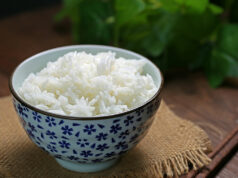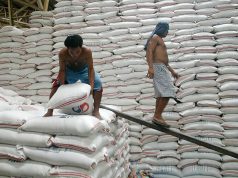Cultivating the banana and coconut industries
DAVAO CITY — Coconut products and fresh banana, despite seesawing volumes and values over the years, have consistently been among the country’s major agricultural exports.
In 2017, banana took the top spot among farm commodities, generating P56.88 billion from 2.86 million metric tons shipped out, accounting for 17.15% of total agricultural export value, based on the Philippine Statistics Authority’s (PSA) Agricultural Indicators System 2018 report.
In September 2018, bananas placed fourth among all export goods with $174.72 million earnings, a 3% share of total export receipts dominated by electronic products.
Coconut oil, in the same month, was ranked eighth with $91.45 million, although this is a 36.4% drop from September 2017.
Another coconut product, desiccated meat, also maintained strength in the world export market with the Philippines cornering 31% of total earnings, according to the PSA.
Midway into the current administration’s term — led by a President with an agricultural secretary who are both from Mindanao where these industries are mainly based — internal and external threats hover in the midst of efforts to strengthen these two sectors’ contribution to the overall economy and promoting inclusive development, particularly for farmers and agricultural workers.
The Pilipino Banana Growers and Exporters Association, Inc. (PBGEA), composed of the biggest local and multinational operators, said the insurgency problem in rural areas remains one of the biggest concerns.
One of the attacks has been as recent as in the last week of November, where two refrigerated trucks of Sumifru (Philippines) Corp. containing Cavendish bananas were stopped and fired upon by suspected members of the communist New People’s Army.
PBGEA Executive Director Stephen A. Antig said more than forging partnerships between the private sector and security forces, what they would like to see government do is pursue localized peace talks and bolster the delivery of social services.
“We support the government’s move of holding localized peace talks. We hope this will be institutionalized as this protracted war that (Communist Party of the Philippine leader Jose Ma.) Sison wants has nowhere to go,” Mr. Antig told Businessworld.
He added that the industry is ready to work with the government in building stronger communities, which he said would address the roots of the peace and order problem.
The Banana Industry Roadmap is also in the works, which is expected to include longstanding concerns on government intervention in the areas of research and development and tariff negotiations.
“The industry has endured these challenges even as banana has become among the major commodities of the region,” said Marizon S. Loreto, executive director of the Philippine Exporters Confederation Inc. (PhilExport)-Davao Chapter and a former Trade department regional director.
Ms. Loreto said PhilExport, which organizes the annual Banana Conference, is working with farmers and the private sector, who have largely been on their own in developing the industry.
The Floirendo-owned Tagum Agricultural Development Co. Inc. (Tadeco), the biggest local exporter, for example, has set up a laboratory that would address threats from diseases.
Tadeco President Anthony Alexander N. Valoria said the facility is the company’s contribution to the industry’s research and development, which has hardly received any support from government.
“This is a necessary facility in order to help the small growers face the challenges,” Ms. Loreto said.
COCONUT
In the coconut industry, just as farmers await to reap the benefits of their long overdue coconut levy trust fund, global prices are on the downtrend.
“Right now, copra is as low as P15 (a kilogram), so farmers cannot really survive,” said Roque G. Quimpan, a member of the Philippine Coconut Authority board, which is being reorganized.
Mr. Quimpan said farmers would be better off selling whole nuts, but consolidation among growers is crucial.
“Right now, we are starting to organize farmers into cooperatives so that they can directly access big whole nut buyers,” he said.
An official of Davao Oriental, one of the biggest coconut producing provinces, said while government interventions on inter-cropping and other alternative livelihood are being implemented, some coconut farmers are sticking to what they know best — labor-intensive copra production.
“Many farmers have stuck to copra farming because coconut is considered a sentimental crop,” said Ednar G. Dayanghirang, chief of staff of Gov. Nelson G. Dayanghirang, referring to how it is passed on among farming families.
Agriculture Secretary Emmanuel F. Piñol, in an Oct. 19 post on his Facebook page, one in a series of many on the coconut industry, cited problems apart from low copra prices and acknowledged the failings of government.
He listed: coconut scale insect infestation that affected the Bicol Region, Basilan, Zamboanga Peninsula, and Romblon; a slow replanting program; failure of the PCA to adjust to the needs of the market losing out to Thailand in the coco water business; failure of government to explore other income opportunities like coco coir production; and “obsession on the Coco Levy Fund issue,” which “virtually stalled all efforts to rehabilitate and revive the coconut industry.”
“The return of the PCA to its Mother Agency, the Dept. of Agriculture, opens a new horizon for the country’s coconut farmers,” Mr. Piñol said.
In another post on Oct. 25, Mr. Piñol expressed further optimism, saying: “With the expected crafting of a 5-Year Coconut Industry Road Map, the release of funds from the Coconut Levy and the introduction of newly-developed varieties by the country’s scientists, the Philippines could once again be among the top Coconut Producing Countries in the world in 10 years.” — Carmelito Q. Francisco and Maya M. Padillo



